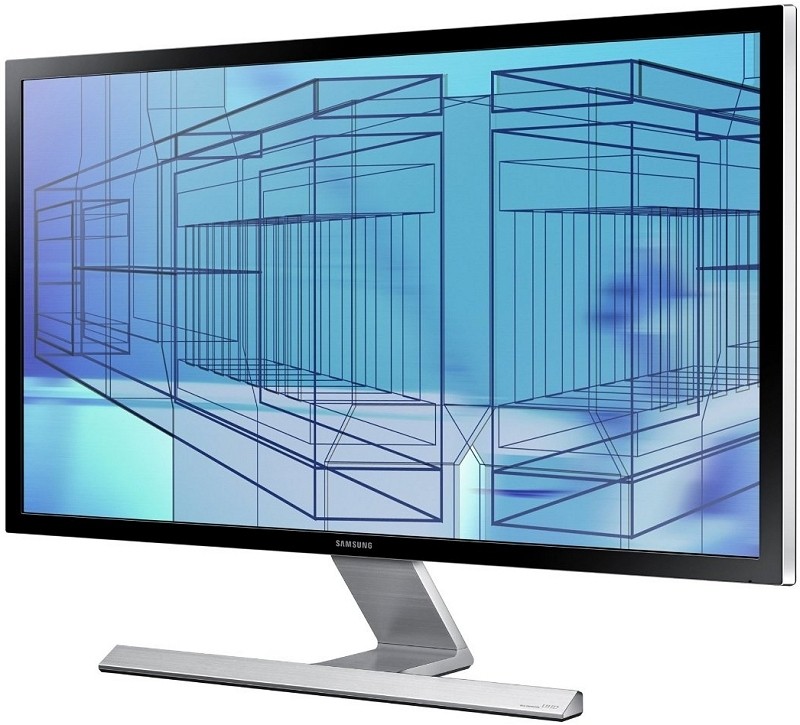
Samsung on Monday unveiled a trio of new monitors but it’s the UD590 that we’re most excited about. This headline-grabbing 28-inch LED display features a UHD 4K resolution of 3,840 x 2,160 (157 pixels per inch) although Samsung opted to include a TN panel instead of an IPS / PLS display.
The UD59 is capable of displaying one billion colors with a speedy response time of 1ms which means it’ll be perfect for everyday use as well as gaming. Other specs include 370 cd/m2 brightness, 1000:1 contrast, two HDMI ports, a single DisplayPort and audio output. The refresh rate through HDMI is 30Hz (meh) while the DisplayPort is capable of 60Hz.
The display supports Picture-in-Picture which allows users to connect two computers (or anything else really) and view both inputs at the same time. Best yet, there’s no dip in resolution between the two pictures.
The only major knock against Samsung’s UHD 4K display is the panel choice. Today’s LCD market is dominated by two different technologies: TN (twisted nematic) and IPS (in-plane switching). The former is speedy and cheap but the latter (including Samsung’s own PLS technology) offers better viewing angles and improved color fidelity.
As such, the company likely went with a TN panel to keep cost down for the consumer. We’ll reserve final judgment until we can get a look at the display in person although early reports suggest it looks pretty good.
The UD590 is available for pre-order as of writing for $699.99 and is expected to ship on April 18 in the US.